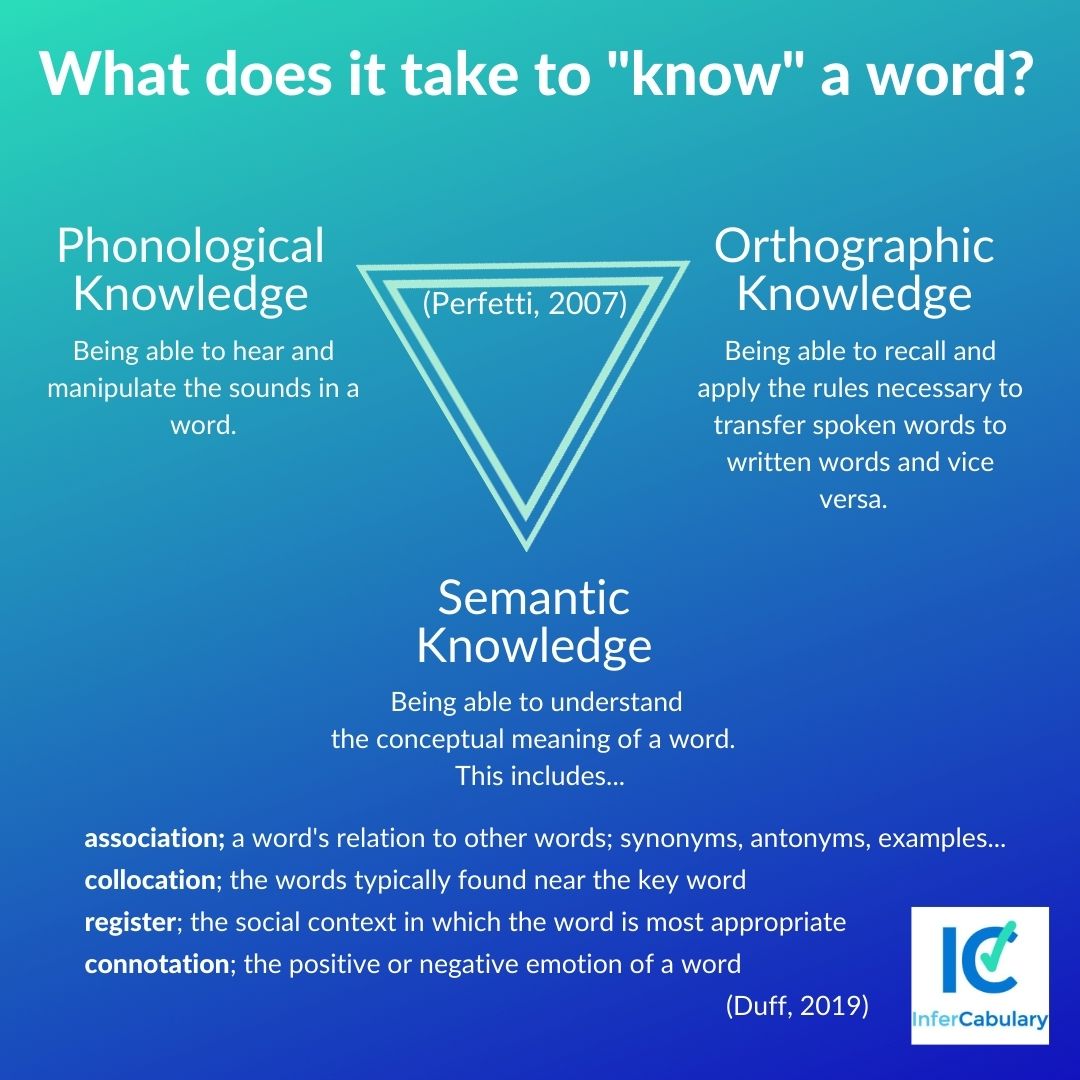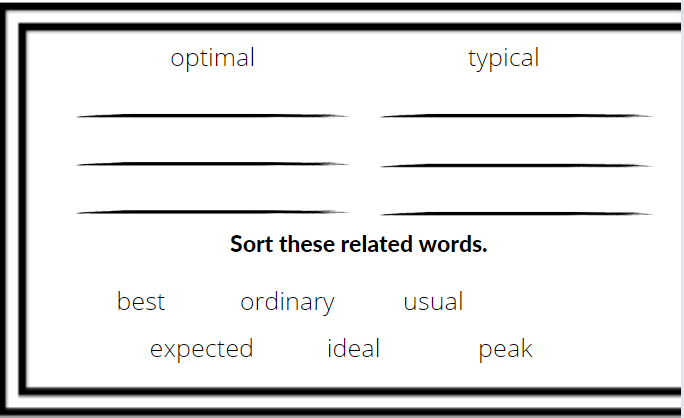Vocabulary Instruction: Exit Tickets
Word learning is a gradual process that historically only comes with repeated encounters across multiple contexts. Consider all of the factors included in deep word learning.
What does it mean to “know” a word?

- Phonological knowledge: being able to hear and manipulate the sounds in a word.
- Orthographic knowledge: Being able to recall and apply the rules necessary to transfer spoken words and apply the rules necessary to transfer spoken words to written words and vice versa.
- Semantic Knowledge: Being able to understand the conceptual meaning of a word including association, collocation, register, and connotation.
How do we support students’ vocabulary acquisition?
If we want students to retain the words they are beginning to recognize, it is important to provide additional opportunities to encounter words even after they have been introduced through explicit instruction.
These additional opportunities, however, should not be drill and practice, such as the traditional method of dictionary definitions and memorization. Rather, students should be provided with meaningful experiences where vocabulary words are presented in alternative contexts (Stahl and Nagy, 2005). Additionally, these activities should include differing expectations (e.g., receptive and expressive activities), as well as provide opportunities to make personal connections. (Beck et al, 2013).
Vocabulary Exit Tickets
Exit tickets are a familiar tool in an educator’s vocabulary instruction toolbox for assessing student knowledge in a formative manner. They work particularly well for maintaining and even continuing to deepen vocabulary knowledge because they can be designed to target the specific contexts necessary to deepen word learning.
For example, after a student has had explicit instruction for the word optimal they should know it is a word that describes a situation. It’s synonyms might include best, perfect or ideal, while the opposite might be not so good. Great explicit instruction may also include some examples of optimal situations. From here, exit tickets can be created to provide more learning opportunities.
In Bringing Words To Life (Beck et al, 2013) the authors provide several great opportunities for students to continue their interaction with words. They emphasize using questions; Would feeding your pet chocolate ice cream be part of an optimal diet?, reasons; What would be an optimal study environment and why?, and examples; Which of these places would be optimal for seeing fireworks? The top of a hill or on a roof?
Understanding Depth of Knowledge (DOK) with vocabulary learning
Bloom’s taxonomy can provide additional ideas when revisiting words. From the lower levels of understanding, students can identify words that do not belong or sort related words according to their targets.
At the analysis level, students can differentiate correct from incorrect use of the target word in a sentence. Or have them use the word to interpret a picture.


Students can demonstrate their creativity by generating a unique sentence that includes the target word or share their personal connection with it.
Optimize your vocabulary instruction
There are countless ways to continue incorporating helpful vocabulary word encounters for students. Exit tickets can be created, saved and used for different words again and again. They can be paper or digital and data can be collected as students are leaving your classroom or later as you enjoy their connections. No matter how you chose to implement them, you helping your students fortify and enhance their word knowledge every time you provide a new encounter!
Author: Jen Knapp; MS, CCC-SLP
Reference: Stahl, S.A., & Nagy, W.E. (2005). Teaching Word Meanings (1st ed.). Routledge. https://doi.org/10.4324/9781410615381



